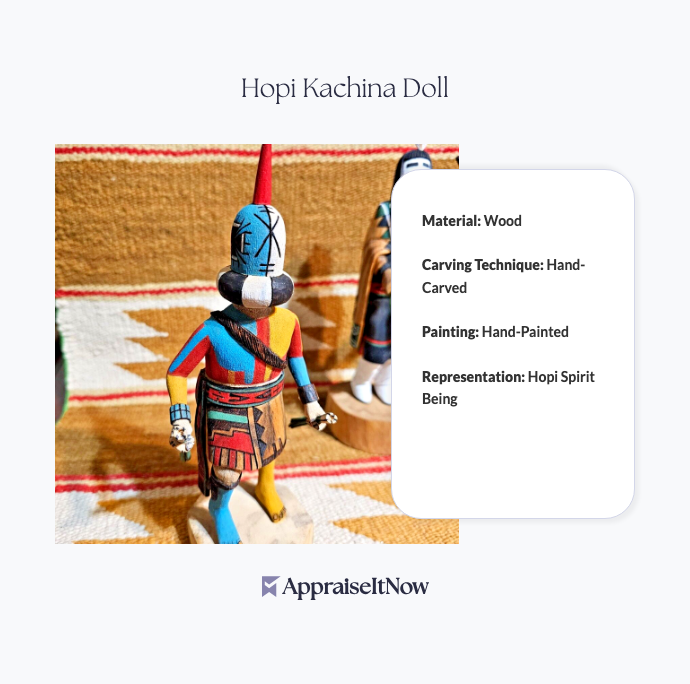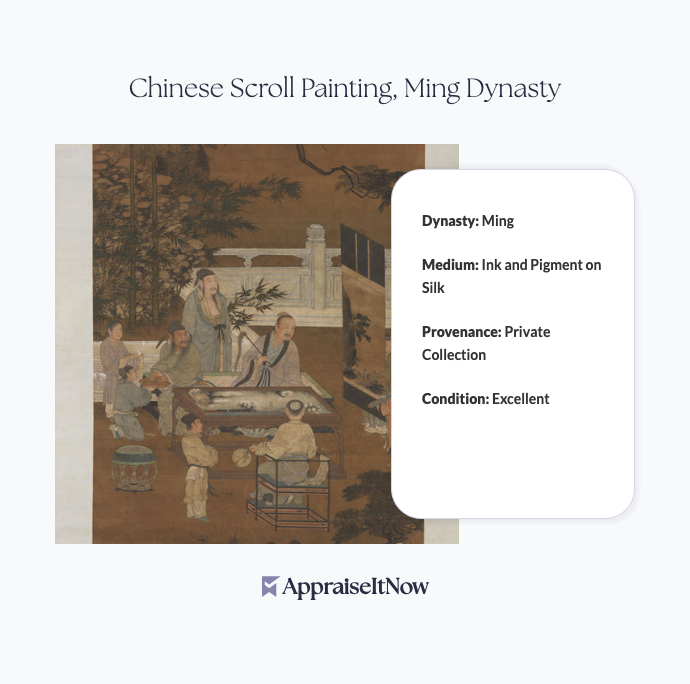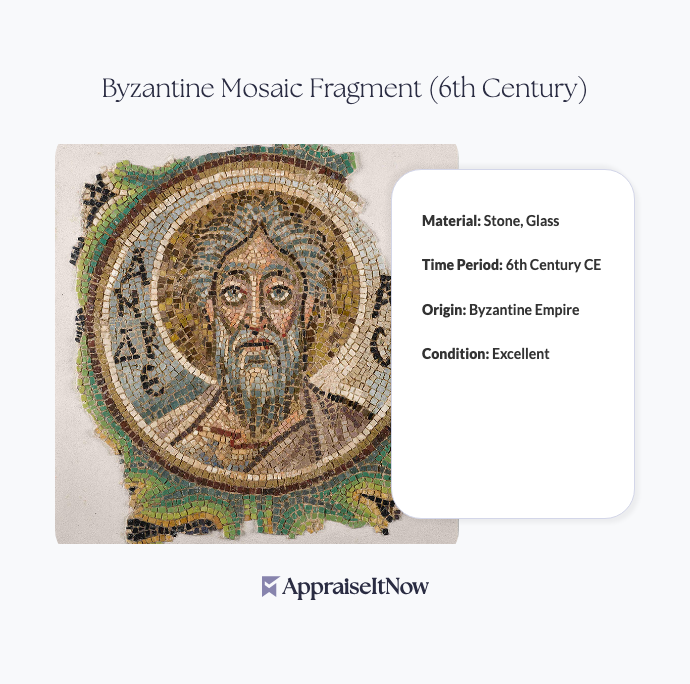<h1>How to Get Your Indian Mughal Painting From Akbar's Reign Appraised</h1>
<p>If you own an Indian Mughal painting from Emperor Akbar's reign, you're holding a piece of one of history's most significant artistic traditions. These exquisite works, estimated between <strong>$10,000 and $15,000</strong> depending on condition and provenance, represent masterpieces of 16th-century court artistry that demand specialized appraisal expertise. Whether you're preparing for sale, insurance, or estate planning, understanding how to properly value your painting ensures you receive accurate documentation and fair market assessment.</p>
<h2>The Historical Significance of Akbar-Era Mughal Paintings</h2>
<p>Emperor Akbar, who ruled from 1556 to 1605, was one of the Mughal dynasty's greatest patrons of the arts. During his reign, the empire experienced unprecedented cultural flourishing, with court paintings reaching heights of refinement that distinguished them from earlier Mughal work. Your painting likely features the intricate court scenes, ornamental motifs, and detailed figures characteristic of this golden era—elements that collectors and institutions worldwide highly prize.</p>
<p>Akbar's patronage created what many scholars consider the finest miniature painting tradition ever developed. The exceptional craftsmanship evident in authentic pieces from this period reflects not only technical mastery but also the emperor's personal vision for cultural achievement. When evaluating your painting's value, this historical context matters significantly because Mughal paintings from Akbar's court represent a rare convergence of artistic excellence, cultural importance, and limited supply. Understanding these factors—what separates a masterpiece from a quality example—requires expertise in <a href="/blog/appraising-asian-art-and-antiques-understanding-cultural-significance-and-value">Asian art and antiques appraisal</a> that few appraisers possess.</p>
<h2>What Makes Akbar-Era Mughal Paintings Valuable</h2>
<p>Several distinct characteristics drive the valuation of authentic Mughal paintings from Akbar's reign. The meticulous attention to detail, vibrant colors preserved through centuries, and ornate motifs showcase craftsmanship that remains unmatched in miniature painting traditions. These paintings were created using natural pigments—lapis lazuli for blues, gold and silver leaf for highlights, and mineral-based reds—that have proven remarkably durable when properly preserved.</p>
<p>Beyond technical execution, rarity significantly influences value. Akbar commissioned paintings for specific purposes: courtly records, literary manuscripts, hunting scenes, and ceremonial documentation. Relatively few have survived intact, making each authenticated example increasingly valuable. A painting's documented provenance—its ownership history and location through centuries—substantially impacts its market assessment. Pieces with clear historical records commanding considerably higher valuations than those with uncertain origins. When appraising <a href="/types/antique-artwork">antique artwork</a> from this period, provenance documentation becomes as important as the work itself, as thoroughly discussed in our guide on <a href="/blog/exploring-the-role-of-provenance-in-art-appraisals-assessing-historical-significance">the role of provenance in art appraisals</a>.</p>
<div class="callout tip"><p><strong>Appraisal Insight</strong></p>
<p>Authenticated paintings with documented imperial use or court attribution often command premiums of 30-50% over similar unsigned works with unclear provenance.</p></div>
<h2>Key Factors Appraisers Examine</h2>
<p>Professional appraisers evaluating Mughal paintings from Akbar's court focus on specific technical and historical elements. Condition assessment examines the painting's structural integrity, pigment preservation, and any restoration work. Original paintings on paper or prepared surfaces should show age-appropriate patina without excessive fading or damage. Appraisers look for evidence of original mounting, framing, and historical handling—details that validate authenticity and age.</p>
<p>The composition and subject matter receive careful scrutiny as well. Paintings depicting recognizable courtly scenes, identifiable historical figures, or commissioned imperial subjects typically achieve higher valuations than generic decorative works. An appraiser trained in <a href="/blog/appraising-fine-art-a-comprehensive-guide-for-art-collectors-and-investors">fine art appraisal</a> will examine the artist's hand, technique consistency, and stylistic markers that distinguish Akbar-period work from later Mughal painting or contemporary recreations.</p>
<p>Technical analysis increasingly involves examining materials scientifically. Modern appraisers may recommend non-invasive testing to verify pigment composition and paper aging, confirming authenticity without damaging the artwork. This scientific approach, combined with art historical expertise, provides the comprehensive evaluation necessary for establishing accurate market value and insurance purposes.</p>
<h2>Understanding Regional Styles and Market Dynamics</h2>
<p>Mughal paintings produced in different imperial workshops developed distinct regional characteristics. The imperial workshops at Agra and Delhi created the most highly prized examples, while provincial courts throughout the empire produced variations reflecting local traditions. Understanding these distinctions matters for appraisal because works from the primary imperial workshops command substantially higher prices than provincial examples.</p>
<p>The global market for Mughal paintings shows strong appreciation trends, particularly from collectors in Asia, Europe, and North America. Museum acquisitions and private collection development have increased demand for authenticated works from significant periods like Akbar's reign. As discussed in our exploration of <a href="/blog/exploring-the-role-of-regional-styles-in-art-appraisals-understanding-local-markets">regional styles in art appraisals</a>, geographic origin and workshop attribution directly influence valuation. Your painting's specific workshop origin—if documentable—can significantly affect its assessed value within the $10,000-$15,000 range or potentially higher for exceptionally rare pieces.</p>
<h2>The Role of Restoration and Preservation</h2>
<p>Any restoration work undertaken on your painting requires careful evaluation by your appraiser. Unlike some restoration contexts where professional conservation work adds value, Mughal painting appraisals require transparency about intervention. Original, unrestored examples typically command premium valuations despite potential condition issues, while extensively restored pieces may see valuations reduced by 20-40% depending on restoration quality and authenticity of materials used.</p>
<p>Preservation conditions significantly impact current condition and future value retention. Proper climate control—maintaining stable temperature between 65-70°F and humidity between 40-50%—prevents paint deterioration and paper degradation. Appraisers assess how well your painting has been maintained, as this affects both current monetary value and the artwork's long-term stability. For detailed guidance on this critical topic, explore our resource on <a href="/blog/the-impact-of-restoration-and-conservation-on-art-appraisals-balancing-preservation-and-value">the impact of restoration and conservation on art appraisals</a>.</p>
<div class="callout note"><p><strong>Preservation Priority</strong></p>
<p>Original condition with authentic aging patina often values higher among serious collectors than restored pieces, even if restoration appears expertly executed.</p></div>
<h2>Authenticating Your Mughal Painting</h2>
<p>Authentication requires expertise that distinguishes genuine 16th-century Mughal paintings from later imitations or contemporary recreations. The proliferation of well-executed reproductions and later Mughal works means professional authentication has become increasingly important. Appraisers examine paper composition, aging characteristics, pigment behavior under ultraviolet light, and stylistic elements to confirm period and authenticity.</p>
<p>Documentation supporting your painting's age and origin strengthens its appraised value considerably. Original purchase records, acquisition documentation, exhibition histories, and scholarly references all provide valuable corroboration. If your painting has been featured in exhibitions, published in art historical literature, or included in museum catalogs, these citations significantly enhance authentication credibility and market value. Our comprehensive guide to <a href="/blog/evaluating-the-cultural-significance-of-art-appraisals-beyond-monetary-value">evaluating the cultural significance of art appraisals</a> explores how historical importance intersects with monetary valuation for culturally significant works.</p>
<h2>Obtaining a Professional Appraisal</h2>
<p>Selecting the right appraiser for your Mughal painting requires identifying someone with specific expertise in South Asian art and Mughal court painting traditions. Certified appraisers with credentials from recognized organizations (AAA, ISA, ASA, CAGA, AMEA) and demonstrated experience with Indian historical artwork provide the most reliable valuations. Your appraiser should have access to comparative sales data for similar Mughal paintings and maintain current knowledge of international art market trends.</p>
<p>The appraisal process typically involves detailed photographic documentation, condition assessment, materials analysis, provenance research, and market comparison. Professional appraisers prepare comprehensive reports suitable for insurance coverage, sale preparation, or estate documentation. These reports include detailed descriptions, condition analysis, valuation justification, and market context that satisfy institutional standards and legal requirements. When seeking qualified expertise, discover how to <a href="/blog/how-to-find-a-qualified-appraiser-for-antique-artwork">find a qualified appraiser for antique artwork</a> through our detailed guidance on selecting specialists.</p>
<h2>Insurance and Documentation Purposes</h2>
<p>Professional appraisals become essential when insuring valuable artwork. Insurance companies require certified, independent valuations to establish agreed-upon replacement costs. Your Mughal painting likely qualifies for specialized fine art coverage, which differs substantially from standard homeowner policies. Documentation from a qualified appraiser enables appropriate coverage levels and protects your investment against loss, damage, or theft.</p>
<p>Beyond insurance, professional appraisals serve critical roles in estate planning, tax documentation for donations, and preparing for sale or auction. Detailed appraisal reports provide the documentation necessary for beneficial tax treatment and accurate estate valuation. Whether your painting represents inheritance, personal collection acquisition, or potential disposition, professional appraisal creates the authoritative record that institutions and legal authorities require.</p>
<div class="callout note"><p><strong>Key Takeaway</strong></p>
<p>A certified appraisal from a qualified specialist in Asian and Mughal art provides the accurate valuation, authentication, and documentation essential for insurance, estate planning, and confident ownership of your 16th-century Mughal painting from Akbar's reign.</p></div>







.avif)







